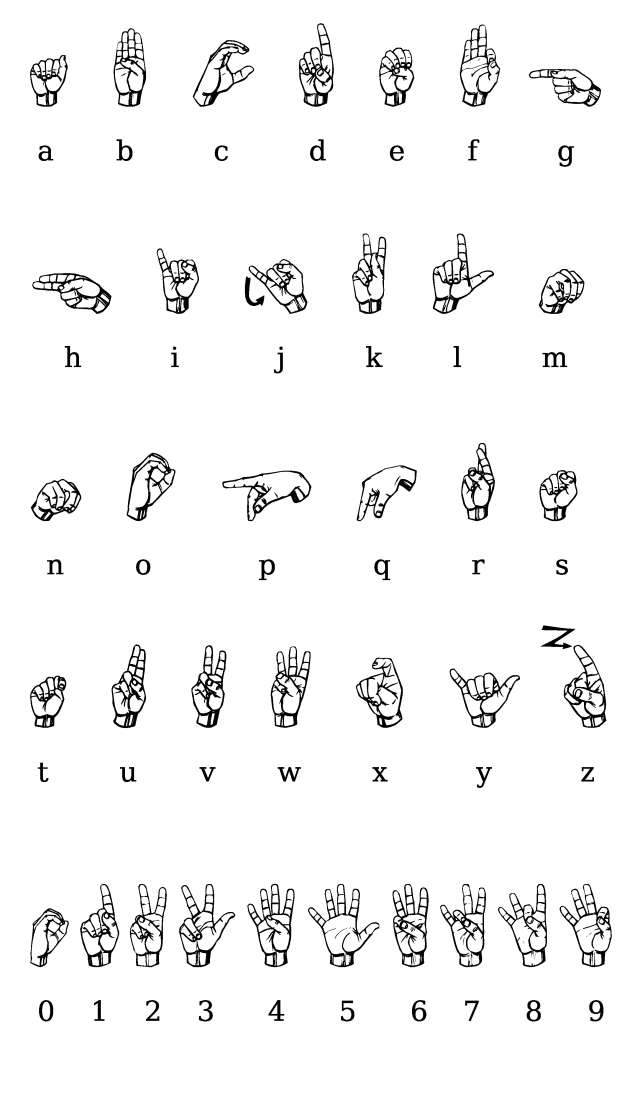AY Honors/Sign Language/Answer Key
The American Sign Language alphabet is a manual alphabet that augments the vocabulary of American Sign Language when spelling individual letters of a word is the preferred or only option, such as with proper names or the titles of works. Letters should be signed with the dominant hand and in most cases, with palm facing the viewer.
Chart
How the manual alphabet is used
To learn more about how the American Sign Language alphabet is used and how to avoid common fingerspelling mistakes made by inexperienced signers, see the article on fingerspelling.
Use for sign languages other than ASL
The ASL alphabet is used with minor modification in Paraguay, the Philippines, Thailand, Malaysia, Hongkong, Taiwan, and Singapore. The Asian countries just listed modify the T, for the ASL T is considered obscene. Instead, they use the T of the Irish manual alphabet, which is like an ASL X, but with the thumb tucked into the index finger (that is, the index finger wraps around the tip of the thumb). In Thailand, one indicates points on the left hand for the tone and vowel marks of the Thai alphabet, and aspiration is not indicated. The Paraguay alphabet is identical to ASL, except for the addition of the letter Ñ, which is an N swiveled at the wrist so that the fingers move side to side, and the letters LL and RR, which are L and R plus movement to the side.
ASL appears to form the basis of the "international manual alphabet", which is used in Germany, Austria, Norway, and Finland. The F, P, and T may be slightly modified, but the details vary from source to source:
- with P, the thumb may touch the tips of the middle, ring, and little fingers, but be otherwise similar; with F and T, the thumb may touch the outside of the bent first knuckle of the index finger, with the fingers not spread for F.
- or, F and P may be identical with ASL, but T is like G with the thumb placed atop the first knuckle of the index finger.
The additional letters also vary according to language, source, and date. Currently, German Ä, Ö, Ü, and ß are signed like A, O, U, and S but with a downward motion, while SCH is a 5 hand (palm forward). In Norwegian and Finnish, the letters Ä, Å, Ö, Ø are derived by moving A and O (in the case of Å, in a small window-washing circular motion), and it is the Æ that gets the 5 hand (perhaps somewhat flexed).

